Fuchsia: description, growing in a pot and in the open field, care
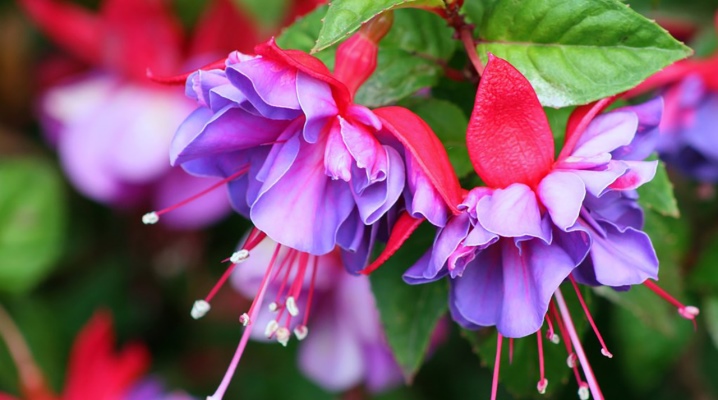
The flowering fuchsia plant is loved and appreciated by both gardeners and lovers of home flowers. The royal botanist and scientist, the Frenchman Charles Plumier, while traveling in the lands of East India in 1696, discovered a new plant to the world and named it in honor of the German scientist in the field of botany and medicine who lived in the 16th century - Leonart Fuchs. Today fuchsia has spread all over the world - it is a famous and desired flower for any grower.
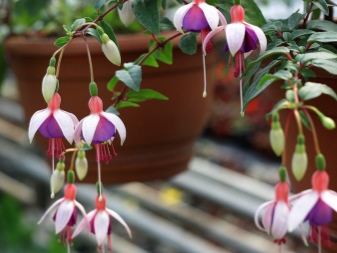

Description
Fuchsia is classified as a herbaceous perennial plant from the Cyprian family. There are up to 100 species of this flower in the world. Fuchsia is common in New Zealand, as well as in Central and South America. Her homeland has favorable conditions - humid fogs and coolness, shade by the foliage of trees from the scorching sun.
Fuchsia looks like a bush or a standard tree.
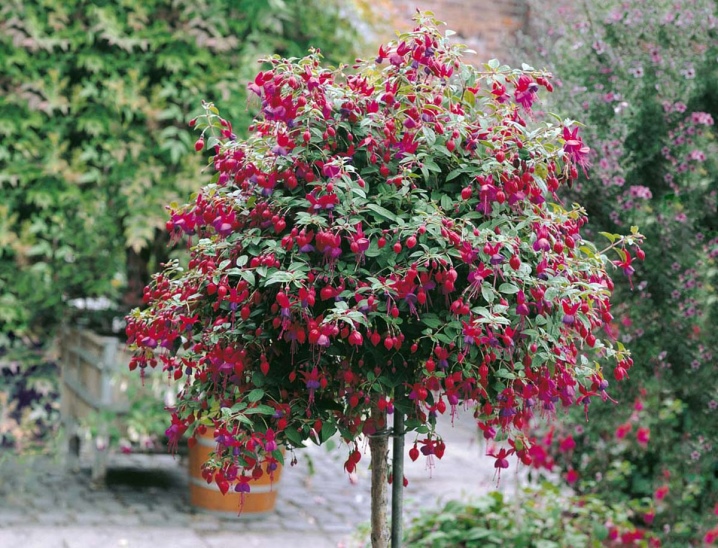
On the branches there are small oval pointed leaves 5-7 cm long, their petioles have a reddish tint, and the plate itself is painted green. The leaves are located on a branch opposite each other.
The shape and color of the peduncles is different for each species. Flowers are simple, semi-double or double. They consist of a calyx and a corolla in the form of a tube with petals diverging to the sides. Multiple stamens are longer than the corolla calyx.

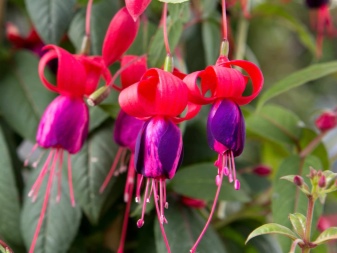
The color of the petals is different - from white to deep red, purple, pink. Because of the unusual shape of the flower, fuchsia is called "gypsy earrings" or "ballerina" - sepals, especially in terry species, look like a fluffy skirt.
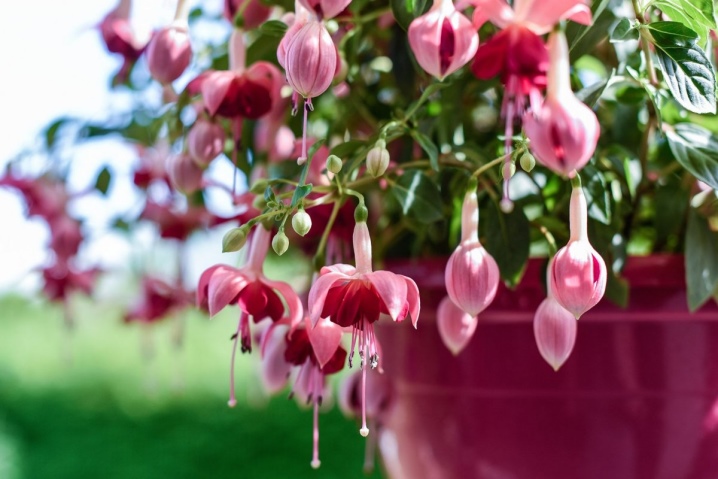
Popular species and varieties
The cultivation of a perennial can be done not only by an experienced gardener, but also by one who does not have deep knowledge of floriculture - it is not difficult to grow a flower. The species diversity of fuchsias is amazing. The following types and varieties are most popular with florists.
- "Bisentenial" - ampelous variety with large double flowers. After flowering, the plant forms fruits in the form of a small berry. The color of the peduncles is bright, the orange petals contrast with the white anther tubes. Cascading branches form a lush bush.
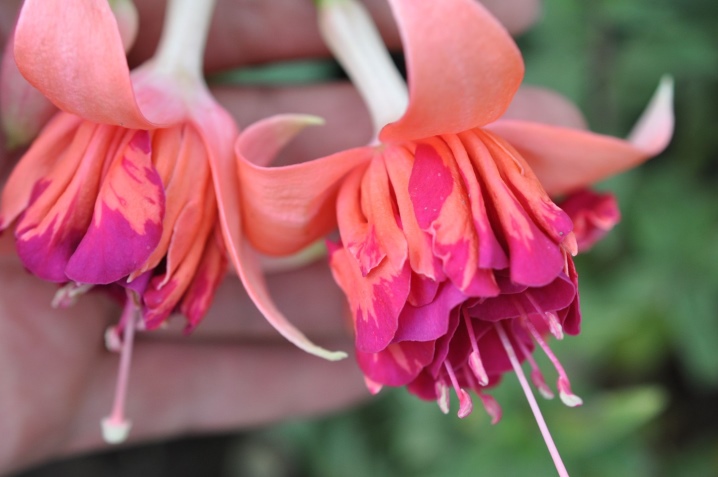
- Cecile - large-flowered variety, bush or ampelous. The bud is spherical, dissolving, forming sepals of a pale pink color, and at the tips it turns into a greenish tint. The rest of the petals have a double skirt, where purple and crimson colors are combined, forming blurry strokes.
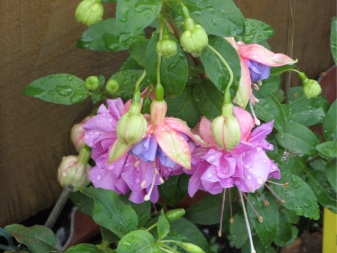
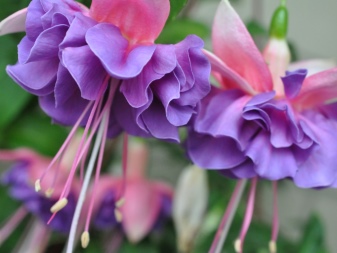
- Bolivian - a spectacular view, it grows in the form of a meter-long tree. The leaves are velvety, the inflorescences are formed into falling clusters, the peduncles are very large - 25-28 cm. The color of the flowers is white or red, flowering begins in March.
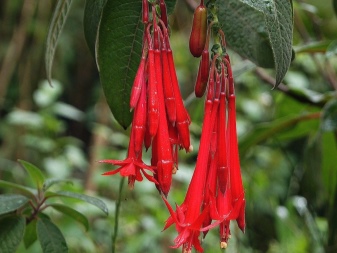
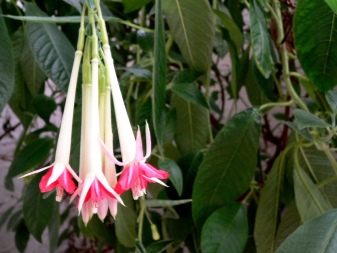
- Three-leaf - bush type, leaves are large, ovoid, 5-7 cm long. The upper part of the leaf plate is greenish with a red tint, the back side is brown. The flowers look like bells and form brushes. The color of the petals is bright, red. Bloom - from May to October. Popular varieties of three-leaf fuchsia are Coralle, Thalia, Mantilla.
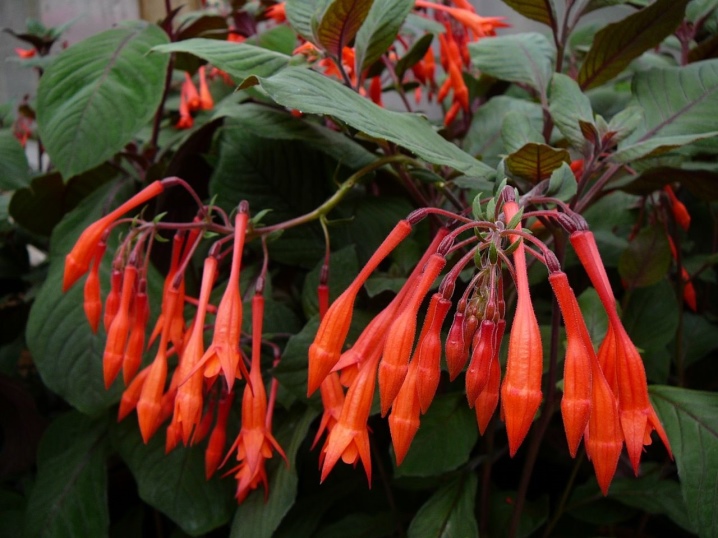
- Graceful - a species that grows up to 1 m in indoor conditions, and reaches 3 meters in height in natural conditions. The flowers are large, elongated, non-double, held on thin pedicels. The color of the petals is deep pink. Bloom - from May to October.
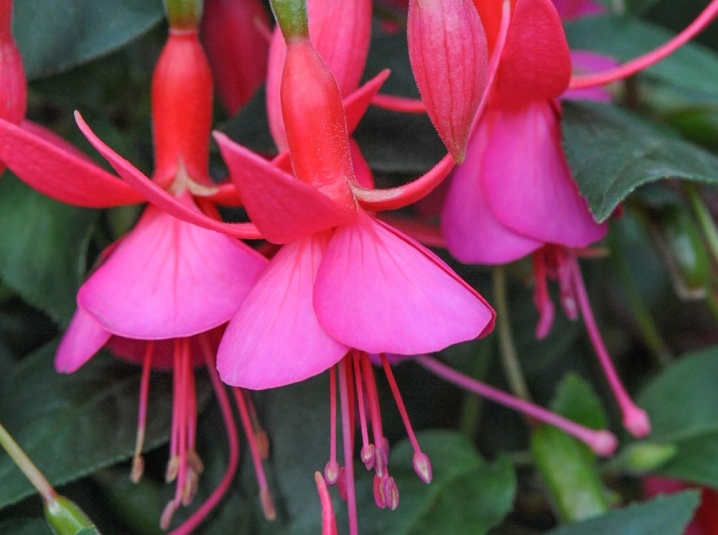
- Autimnale - semi-ample variegated fuchsia.With the help of regular pinching of shoots, it is formed into a lush bush or standard tree. The skirt is simple in shape, purple-purple, sepals of bright scarlet color.
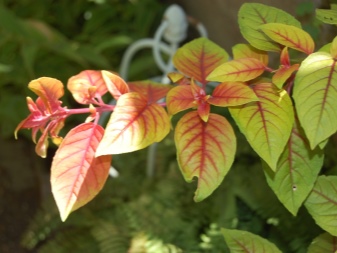
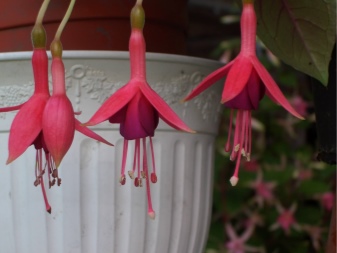
- Rohees new millenium - large-flowered bush form with spherical buds. Sepals are bright red, almost crimson. The petal skirt is terry, dark, it seems that it is almost black - it has unusual shades due to its dark cherry color.
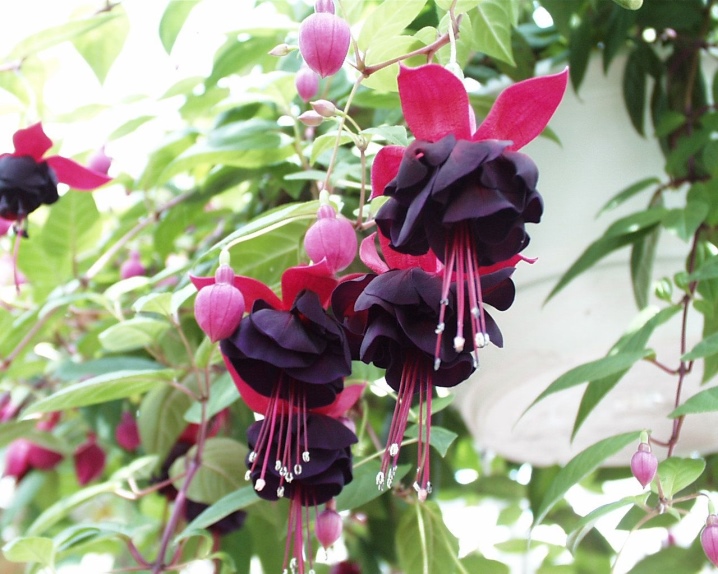
- "El Camino" - semi-ampelous self-branching variety, green leaves abundantly cover the branches. It blooms in early spring, continuing to bloom until autumn. Round buds, blooming, form large double flowers. The sepals are red-pink in color, the terry skirt is white, but has red strokes and veins.
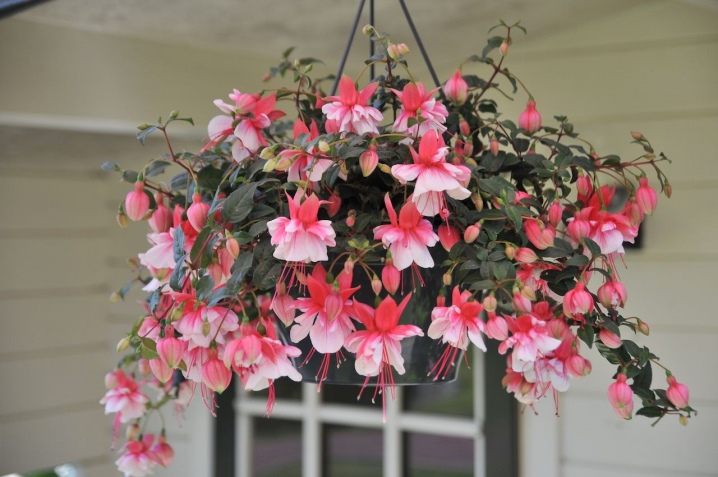
- "Water Nymph" - a bush variety with simple flowers. The sepals are creamy and the skirt can be bright orange or red. Pinkish-white stamens, medium-sized leaves. The variety blooms for a long time and abundantly.

- Radisson - it can be ampelous and bush, forms spherical buds, grows slowly, but its flowering is magnificent. It has large double flowers, dark pink sepals, and a blue skirt. Leaves are medium in size.
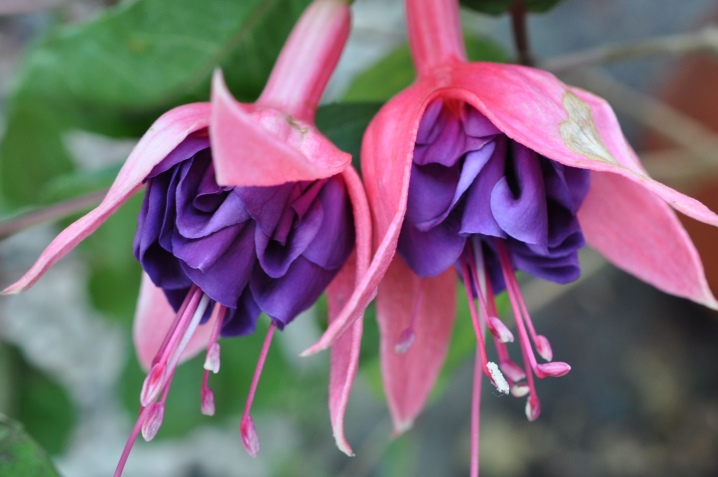
- "Pianes Berg" - ampelous variety, carved small leaves have a dark green color. The structure of the flower is unusual - the petals tend to curl. Large buds are in the shape of a ball. Sepals are pink-white in color, and at the ends it turns into a greenish tint. The skirt is of a terry structure, white and cream. This variety blooms later.
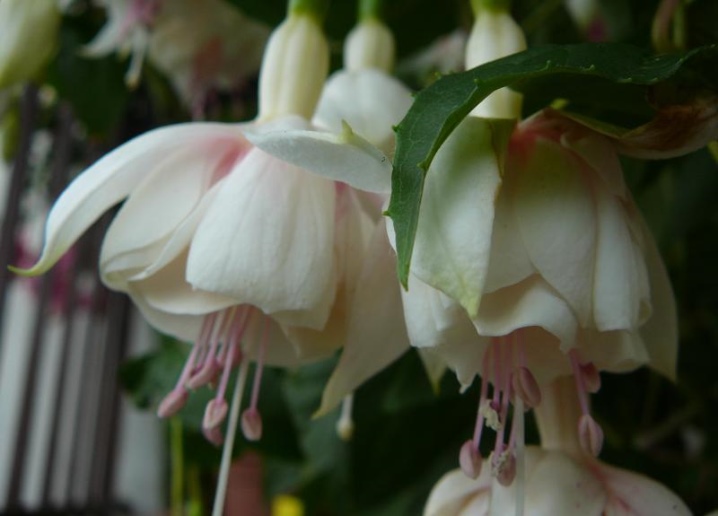
- Trifilla - on the basis of the species, triphylla-hybrids have been bred, for example, varieties "Express", "Orient" and others. These fuchsias are famous for their velvety leaves and long, elongated flowers gathered in inflorescences. Flowering - from mid-summer to early autumn. Shades range from creamy white to bright red.
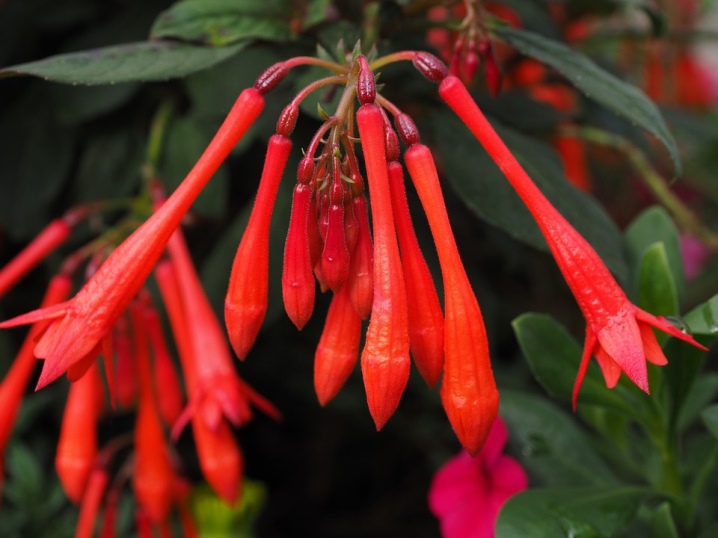
- "Santa Clara" - ampelous variety with huge double flowers. The sepals are painted white, while the skirt with burgundy petals also has expressive strokes of red or white.

- "Swingtime" - semi-ampelous variety, can be cultivated as a bush form. The buds have the shape of a flattened ball. Large double flowers bloom from them. The sepals are bright red, and the skirt has a contrasting white color. The doubleness of the petals is strongly pronounced.
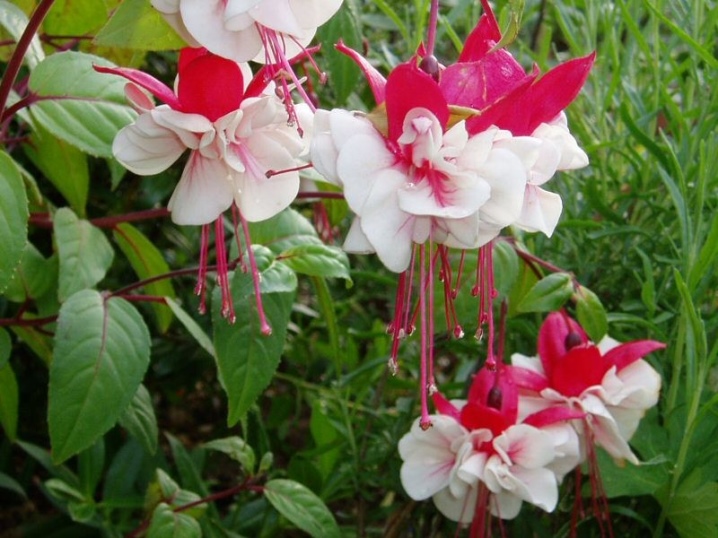
- "Patio Princesses" - ampel plant, which is often grown as an indoor plant. Flowering begins in May, the flowers have a semi-double structure, but there are a lot of them. The buds are painted in rich dark pink shades. The variety is used to decorate a balcony or patio, but with the onset of the first frost, the flower must be removed to the room.
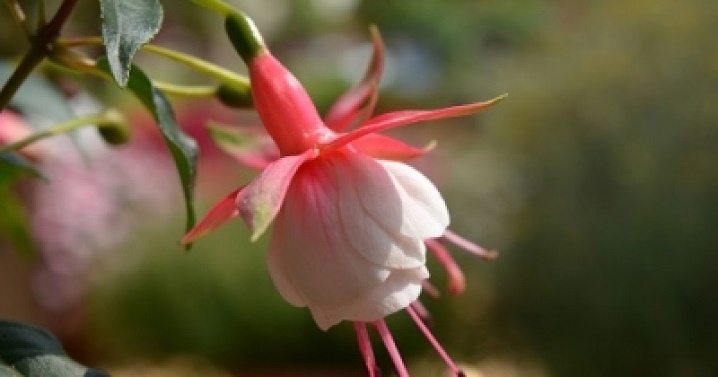
- "Butterfly" - ampelous variety, can be grown as a bush form. The flowers are large in size, their sepals curl into rings and have a bright crimson color. Skirts in the process of bud opening have reddish shades, and after the opening of the flower, they are dominated by a crimson color.
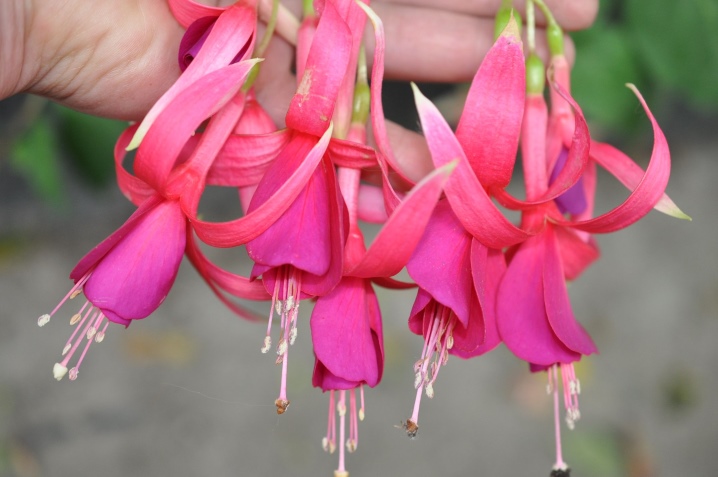
- "Deep Purple" - likes to grow in the shade, ampelous perennial, grows large and has a spreading shape. The flowers are very large and double. The sepals are white, and the skirt is dark lilac, sometimes even bluish. The flowering of this variety is not only long-lasting, but also very abundant.
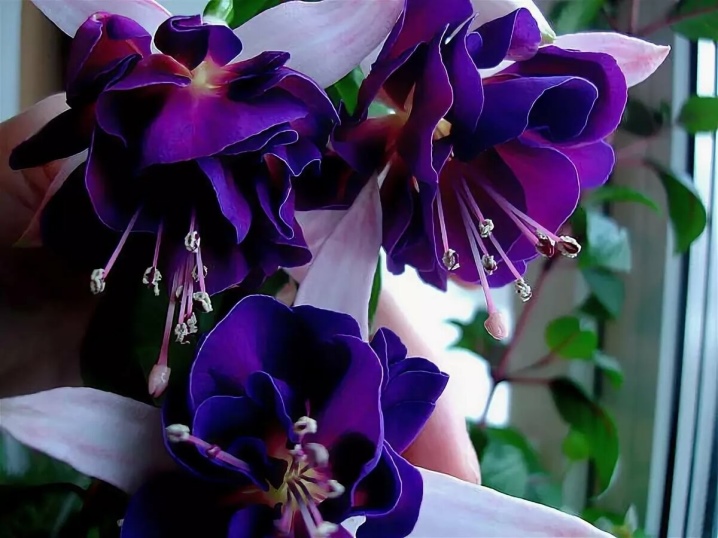
- Delta Sara - the variety tolerates wintering well and differs from other winter-hardy analogues in that it has large flowers and a double structure. The color of flowers is usually blue and white. This perennial variety has a well-expressed property of rapid growth.
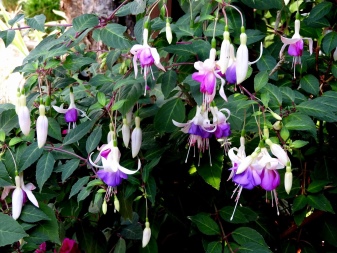

- Snow Berner - perennial bush or semi-ample form, with large flowers of a double structure. The buds are shaped like a ball. The sepals are painted in light red tones, and the skirt is white with red streaks.

- "Satellite" - perennial, resistant to sunlight.The flowers are large, of an unusual structure - the skirt has a simple petal shape, they are elongated, and their cherry-white color has stripes. The sepals of the flower are white.

- "Lisa" - semi-ampel and bush form with large double flowers. The semi-ample look has flowers with dark pink sepals and a lilac skirt with a bluish tint, on which there are pinkish streaks or pink strokes. The bush form has large flowers with pink sepals and a pure blue skirt, but over time, the blue turns into lilac.
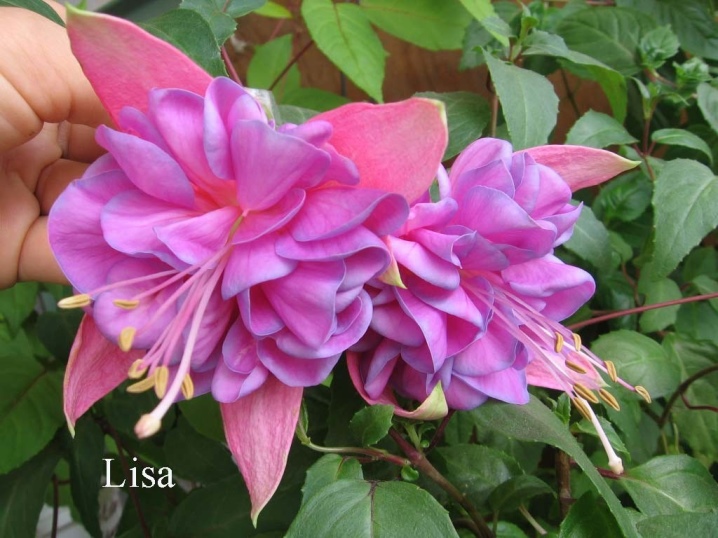
- Hannah - bushy form with strong branches, lignified over time. The stems are grown from this variety, the shoots grow up to 45-55 cm. Flowering occurs throughout the summer period. Flowers have a simple structure, but sometimes they can be double. The sepals are bright red, the skirt is creamy with crimson veins. The leaves are elongated.
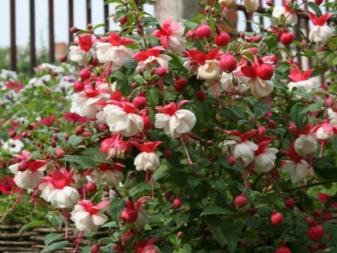
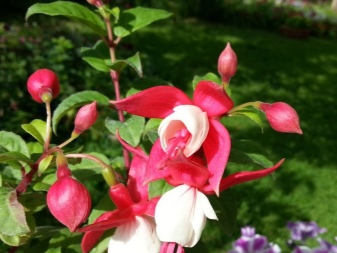
- Golden Anniversari - a variety of ampelous and bush forms. Flowers are large in size and double structure. The buds are round. The sepals are white, and the skirt is a rich purple hue. The leaves are medium in size, their color is yellowish-green.
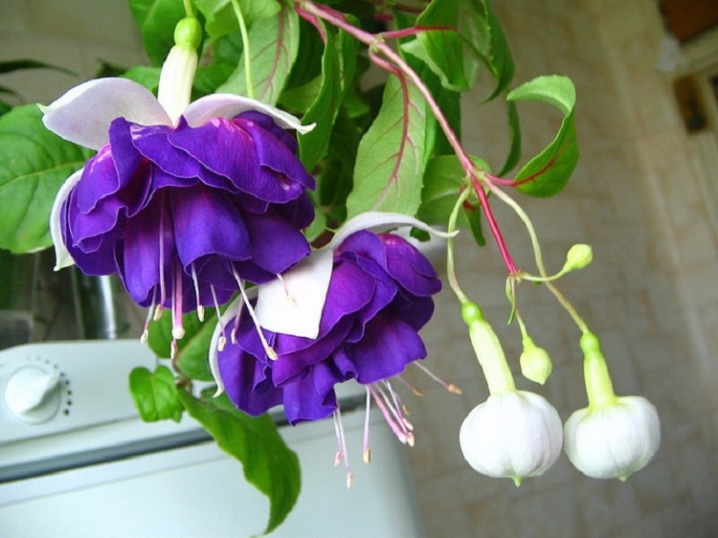
- "La Rossita" - bush form with large double flowers. Sepals are red-pink tones, tips have a green tint. The skirt is pinkish-white. The variety tends to bloom profusely and for a long time. Medium-sized leaf plates.
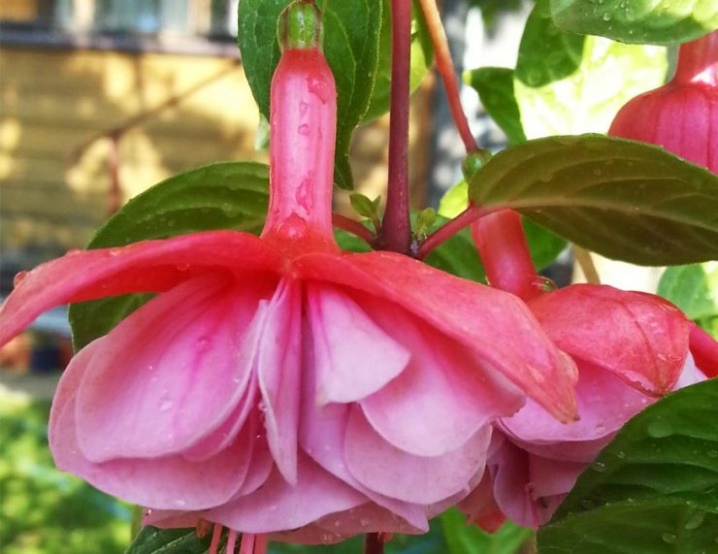
Growing conditions
Among indoor and garden flowers, fuchsia is far from the most demanding plant. It can be grown in a pot, the volume and size of which will allow it to be used both in the garden and in the room.
Lighting
Fuchsia loves the sun, but grows slightly shaded conditions. Leaving a flower on a south-facing balcony can burn flowers and leaves. The same can happen on the south window in the apartment.
For this reason, the eastern or western side is considered the best place for a flower, and if fuchsia lives in the back of the room, then it is supplemented with a phytolamp.
In autumn and winter, when the sun's rays are quite small, backlighting is also necessary for this plant. The flower should receive light for 12 hours daily.
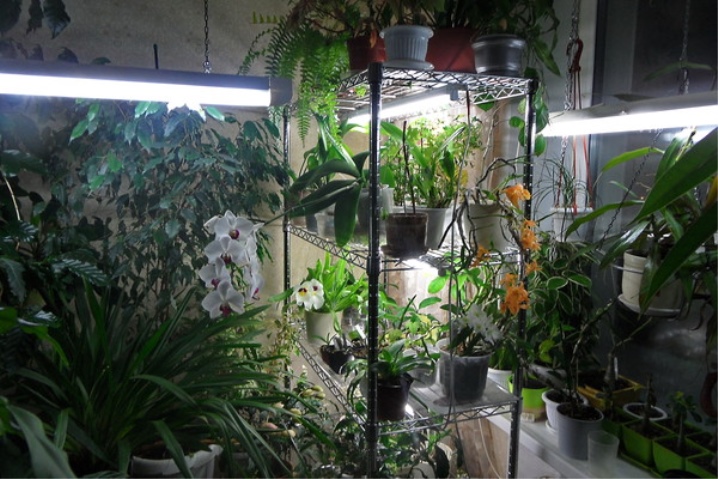
The soil
Any land with good drainage is suitable for a perennial. Perlite, vermiculite or expanded clay are used as drainage. You can make a fertile soil composition yourself, using humus, peat and sand in proportions of 3: 2: 1.
For good growth and development of fuchsia, loose and nutritious soil mixtures are needed that are able to absorb water and perform air exchange. The reaction of the soil must be slightly acidic or neutral... If the plant is planted in a soil poor in nutrients, and even with a pronounced alkaline reaction, the perennial will very quickly begin to rot, the color of its foliage will lose its brightness, flowering will be poor, or the plant will completely drop the collected buds.
If there is no opportunity for self-preparation of the soil substrate, it can be purchased ready-made by visiting a specialized store.
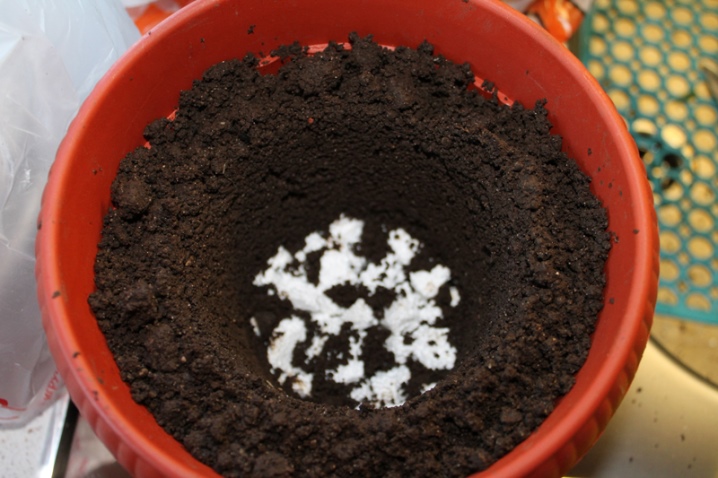
Fertilizers
To make fuchsia grow vigorously and bloom profusely, the plant needs to be fed... But you can apply fertilizers only 1 month after you have done your annual spring flower transplant. The frequency of feeding - Once a week. Use ready-made mineral compositions for flowering plants. During the period when you grow a seedling or form a standard tree, fuchsia must be supplied with nitrogenous compounds.
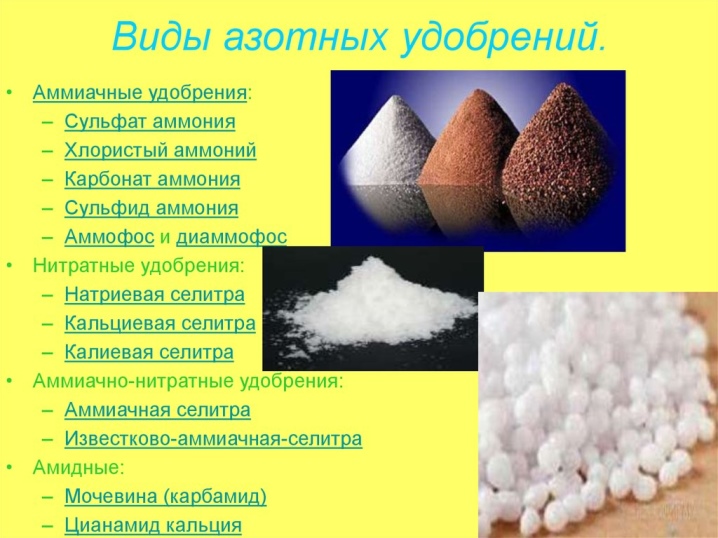
Before applying the fertilizer solution to the soil, it must be well shed with water to avoid scalding the root system.
Some drugs, for example "Epin", they do not bring it into the ground, they need to spray the plant to enhance its growth and acclimatization. Fuchsia is fertilized with bone meal powder, which is spread over the soil surface and then watered. It is enough to make 1 tbsp. l. funds for a pot with a medium-sized plant.
Overfeeding is harmful to the plant. An excess of minerals will force the perennial to grow foliage, but it will bloom poorly - the peduncles will be weak and few of them are formed. Fertilize in the spring and summer, and let the flower rest in autumn and winter.
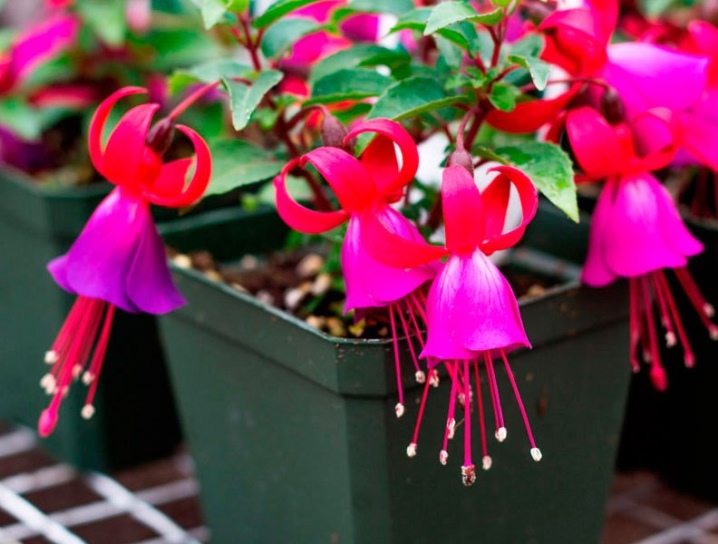
Care features
In the fall, many fuchsia varieties are harvested from the street to store in optimal conditions until spring arrives. If you grow a perennial at home, you should know that having found a suitable place for a flower, it cannot be moved and moved. This can result in foliage shedding, reduced growth, and cessation of flowering.
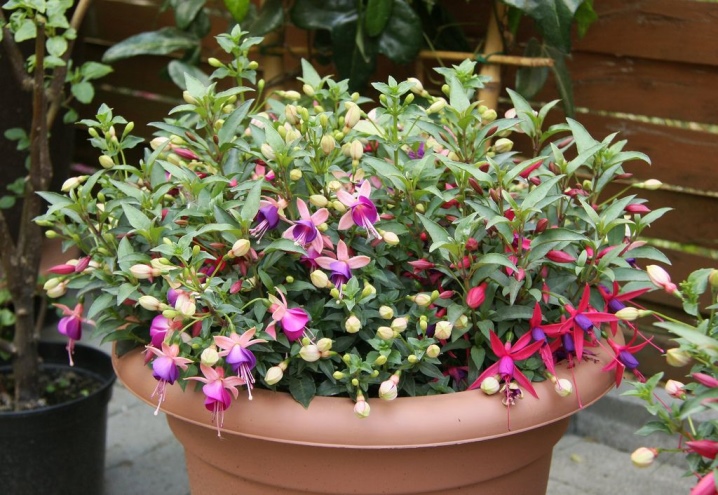
Watering
In spring and summer, the plant loves frequent and abundant watering, and in autumn and winter it is reduced. It is important not to flood the root system and not to provoke its decay.... It is necessary to moisten the soil when its top layer dries out. After watering, drain all excess water from the pan. In the heat of the flower, along with watering, you can arrange irrigation in the form of a shower.
In summer, fuchsia is watered once every 3 days, and if the weather is hot, then watering is performed every other day. Closer to autumn, the watering regime is reduced and they do it 1 time in 7 days. It is better to water the plant in the morning or evening, at sunset. Plant it is moisture-loving and does not tolerate both waterlogging and a long anhydrous period.
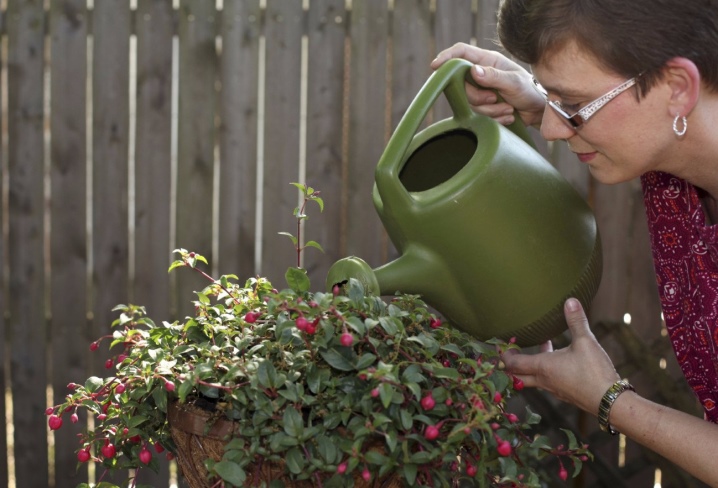
Pruning
A perennial should be pruned often, a haircut will stimulate its growth. Pruning is understood as the pinching of the tip of the shoot. This measure allows the plant to form many lateral shoots. You need to start pinching a young seedling 2 weeks after planting in a pot. Then the pinching is performed every spring - until the moment when the plant begins to bloom.
A beautiful shape is obtained when all the stems are cut off the flower, leaving them at the level of 4 or 5 leaves.
To create a standard tree, seedlings are planted densely and close to each other, while regularly breaking out all the side branches and flower buds from them. They continue to do this until the plant reaches the desired height, and then pinch the top growth point. During the growth period, the plant it is important to feed with nitrogen.
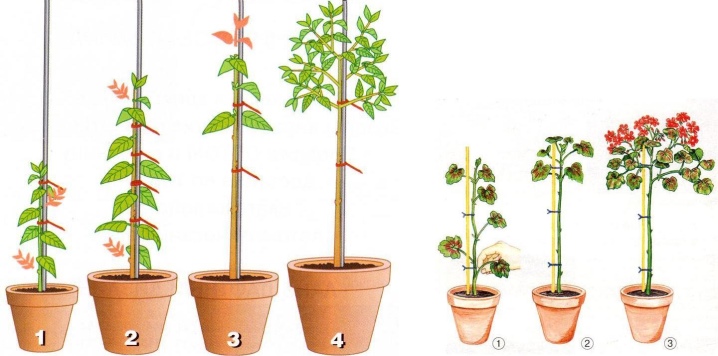
Reproduction
Fuchsia is propagated by cuttings or seeds. It is quite easy to grow roots for cuttings, and planting material appears in abundance during spring pruning.
Propagation by cuttings
Cuttings in the form of shoots are suitable with 2-3 internodes... To ensure that the cuttings get more moisture, the leaves are cut in half. Large leaves with a dormant bud can also grow roots when placed in water. To accelerate the growth of roots, cuttings are treated with the Kornevin stimulator.
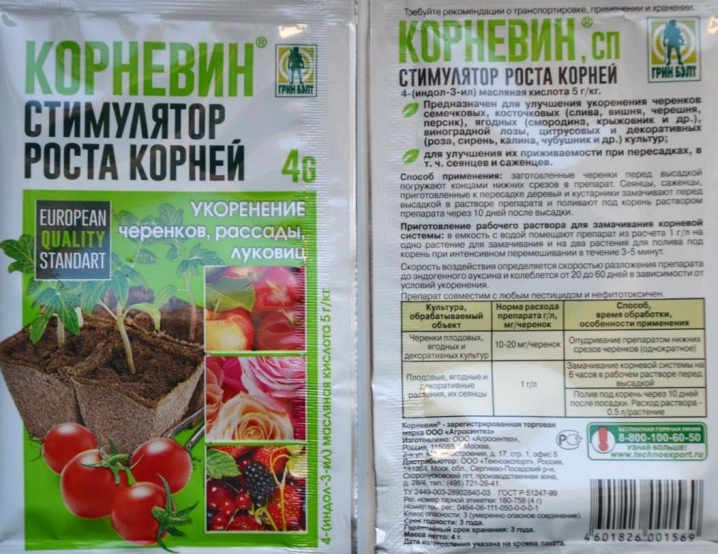
When the stalk grows roots, it is planted in a pot with a diameter of 9-10 cm. The planting is done in moist soil - they take a mixture for adult fuchsias and dilute it by half with sand or perlite. The planted cuttings are placed at a temperature of 20-22 ° C and provide diffused sunlight. From above, the planting is covered with a film, but once a day it is removed for a couple of minutes for airing. After the appearance of the leaves, the cuttings are planted in a permanent place.
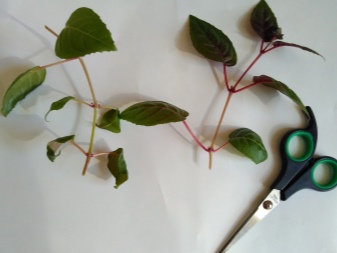
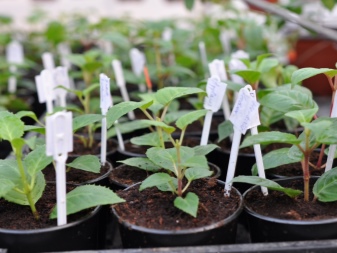
Seed propagation
The seeds are placed in a germination container, where a sterile soil is prepared. Sprinkle with a thin layer of soil and cover with foil. They are placed in a warm and bright place, and after 2 months shoots appear. After the seedlings grow 2-3 pairs of leaves, they are dived and grown in separate containers.
When growing seedlings it is important to monitor the soil moisture and, if necessary, moisten it with a spray bottle.
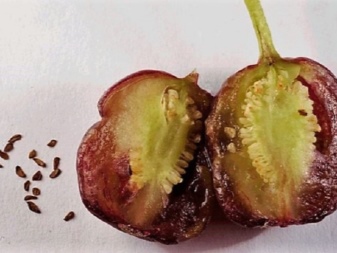
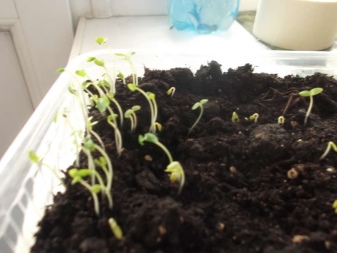
Problems and illnesses
With improper or irregular care, various problems occur with fuchsia. For example, a plant throws off leaves and buds, its flowers become smaller, or in spring the plant does not bloom, but gives only foliage. It also happens that its branches suddenly become stiff, dry up, or they have a white coating.
Excessive application of nitrogen to the soil can also adversely affect the flower, if at the same time a sufficient amount of phosphorus-potassium components has not been added. Violation of this balance forces shoots to grow, but leaves roots and buds without movement in growth.
The reason for poor growth may be a cramped pot, and then the fuchsia does not gain buds or they cannot open. Poor development and rare pinching.
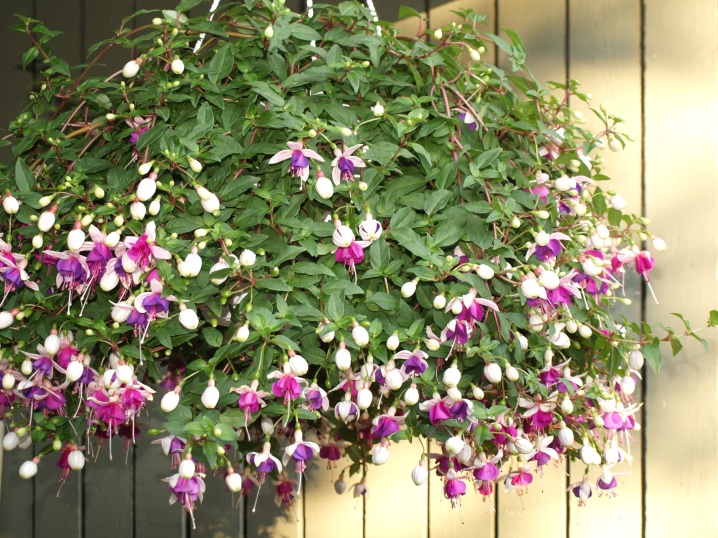
Sometimes rotting roots can be the cause of disease. In this case, they need to be cut off, the cuts should be powdered with coal powder, the plant should be placed in a container with water, and when it has new roots, the flower should be transplanted into another soil.
In addition to mistakes in leaving, fuchsia can be affected by whitefly, and then the plant becomes covered with rusty spots, and the leaf plates curl inward and fall off. This insect appears when the air humidity is high. For treatment, spraying is stopped, damaged stems are removed and the flower is treated with insecticides.
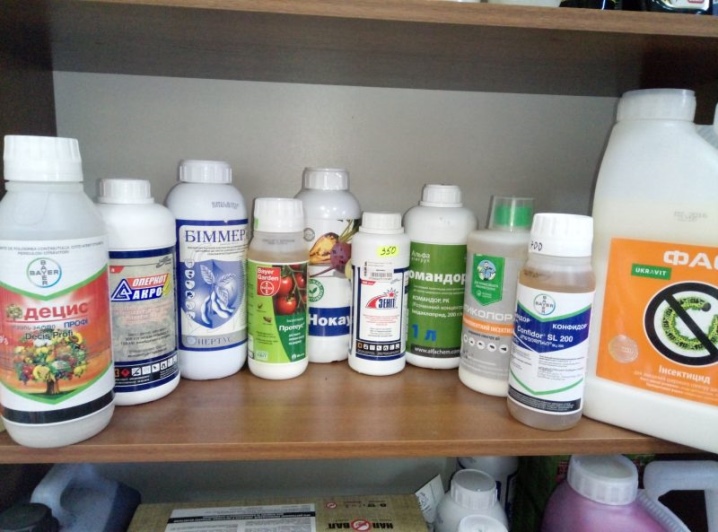
Fuchsia can be attacked by spider mites - a thin cobweb appears on the shoots, the plant throws off the foliage and withers before our eyes. It can be cured by removing the affected parts and spraying with insecticidal preparations. Follow the instructions.
Common fuchsia diseases are gray rot, with the appearance of mold spots on leaves and shoots, as well as viral rust, which manifests itself in the form of red spots.
Treatment in both cases is carried out with fungicidal solutions, and if they are powerless, then the plant is destroyed.
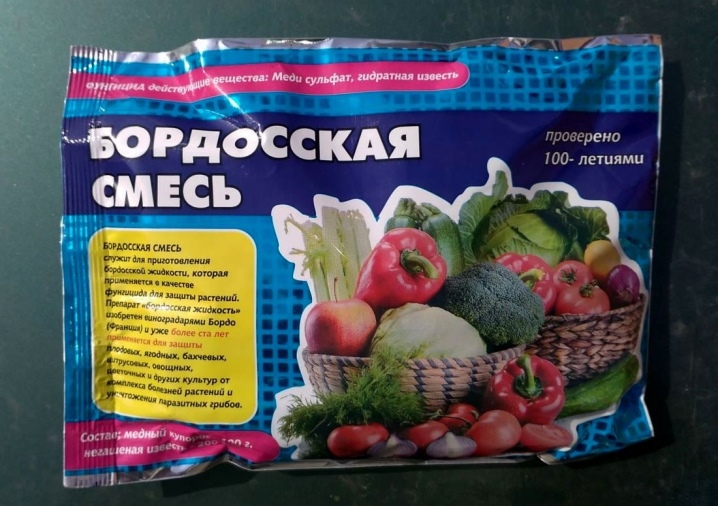
How to transplant?
Digging and replanting fuchsia should be, only if its roots have taken all the place in the pot... This usually happens every year, so a transplant is carried out in the spring. Before transplanting, the shoots are shortened to the plant, and the roots are checked for rot. A new pot is taken 2-3 cm larger than the previous one, drainage is poured onto the bottom, which takes 15-20% of the entire capacity. After transplanting, the plant must be watered and sprayed.
Ampel plants are planted in one container of 4-5 pieces, then it can form a beautiful bush with falling branches.
Bush species should be planted in 1 copy, and the container should not be too large so that the flower can fill the entire space with roots in a year.
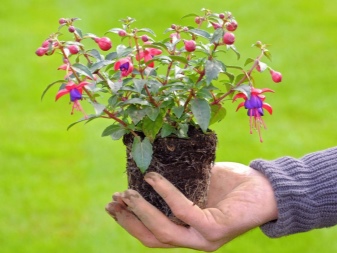
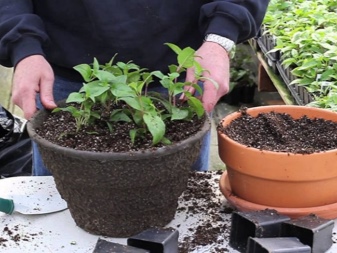
What to do in the fall?
The dormant period for fuchsia begins in winter, and preparation for it occurs already in September, after flowering, when the frequency of watering is reduced and fertilizing is stopped. To prevent the plant from freezing, it must be transferred from the garden to the basement or veranda and stored at a temperature of 7-8 ° C. A houseplant withstands a higher temperature, which is stored on the balcony at + 10-15 ° C. Usually, when street fuchsia has shed its leaves, it is a signal that the plant is ready for a dormant period. To prevent fuchsia from freezing, the pots can be stored in boxes with sawdust.
How to care for fuchsia, see below.







































































































The comment was sent successfully.